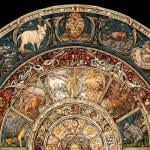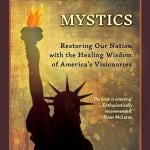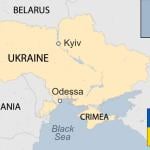
Pastors have a frequent question when they begin to discover mimetic theory. “That’s great. But how does it preach?”
Reverends Tom and Laura Truby shows that mimetic theory is a powerful tool that enables pastors to preach the Gospel in a way that is meaningful and refreshing to the modern world. Each Wednesday, Teaching Nonviolent Atonement will highlight Tom and Laura’s sermons as an example of preaching the Gospel through mimetic theory.
In this sermon, Tom and Laura discuss the mimetic pull of the crowd over the disciples. They explain that Jesus pulled them away from the crowd, not to take a vacation, but “to break the gravitational pull of the adoring, demanding and ultimately dangerous crowd or he will lose the disciples.” The disciples were in danger of being pulled by the crowd’s fickle desires away from God’s loving desire. We experience the same temptation today. Will we follow the crowd, or God’s enduring, nonviolent love revealed in Jesus?
Year B, Pentecost 8, Proper 11 (July 17-23, inclusive)
July 19, 2015
By Thomas L. and Laura C. Truby
Mark 6:30-34, 53-56 (Common English Bible, copyright 2011)
No Time to Eat!
The apostles (meaning those who have been sent out) have returned from their foray into the surrounding towns where Jesus had sent them two by two. They are excited by what they have been able to do. They have healed people and cast out unclean spirits. They tell Jesus about it all. There is a frenzied, manic quality to the scene. The text says ‘Many people were coming and going, so there was no time to eat.” What a way to describe the “too muchness” of what they are experiencing.
They appear distracted and over-stimulated. Look at the power they are able to weld! They can cure people and people flock to them. They are like rock stars who find themselves at the center of people’s adulation. Diversions are everywhere and they are speeded-up to the point where they are not stopping to eat. Out of balance and ignoring basic human needs, they are playing with fire.
Jesus sees their condition says “‘Come by yourselves to a secluded place and rest for a while.’” Jesus has to get them away from these crowds or they will lose touch with reality. Their souls are in danger. They will lose their sense of grounding and get carried away by the crowds of demanding people coming and going. Large crowds of people, even admirers, powerfully affect us and not necessary in good ways. It is almost impossible to resist them. We get entranced and find ourselves thinking and behaving in ways we would not think or behave on our own.
Jesus knows he must get them away to a secluded spot for their soul’s sake. The membrane that separates them from the crowds has grown thin and needs to be renewed. They are losing their capacity to keep themselves separate from what the crowd wants and think. The crowd could easily turn the disciples into the leaders of their fickle desires. A crowd turning violent is always the danger in Mark. Of course that’s what the crucifixion is. A mob turned violent.
The disciples are like children who are so tired they have lost touch with how tired they are; only this is way more dangerous. The crowd in Mark is always suffused with the threat of all against one. The disciples need to get away from the crowd!
Jesus pulls his disciples out of the crowd and gathers them into a boat and then gets in himself. He then leads them across the lake toward a deserted place. But sadly their attempt at crowd evasion fails. “Many people saw them leaving and recognized them, so they ran ahead from all the cities and arrived before them.” When they arrive at their secluded destination the crowds are there to greet them.
I thought they were going to get a vacation! I thought the point of this was that we need to get away, have alone time, and invest in the renewal of our souls. I thought the lectionary people put this text in the middle of July to justify the pastor’s vacation in August. I thought the pastor or any seriously religious person should leave town and find some sort of retreat center or feel guilty for falling short of the ideal Jesus set before us. This isn’t turning out like I expected.
Maybe Mark isn’t thinking in 21st century categories like our idea of the two-week-vacation. Maybe he has something else in mind and knows something we don’t. Maybe Mark knows Jesus has to get the disciples away from the crowd and together around him or they will succumb to the desires of the crowd. Maybe the center of Jesus’ intention was not getting them to a deserted place, like we have thought, but getting them away from the crowd and reassembled with Jesus as their center.
I can’t find words strong enough to express the importance of this. Getting the disciples into the boat with Jesus and getting them out to sea away from the crowd mattered way more than their destination. He has to break the gravitational pull of the adoring, demanding and ultimately dangerous crowd or he will lose the disciples.
This is all extremely important and mirrors the choice we face today and have always faced throughout history. Will we follow Jesus or will we go with the culture? It seems clear to me that the culture is the crowd. We will either follow the crowd or we will follow Jesus. It is very rare in history that we can do both. Jesus-followers usually find themselves on the side of those their culture ignores or despises because culture is almost always built on exclusion and violence when you look at it deeply and with eyes that see.
The church throughout history has not done well in making this choice for Jesus and our young people and thinkers use that as a reason to reject the church. They point to the Crusades, the pogroms, the way Christian’s treated native peoples during colonialism and beyond and the ways Christians built their societies on the slavery of others and continue to do so in disguised and culturally embedded ways. If we want to follow Jesus we must get away from the crowd. Jesus will almost always lead us away from the crowd.
When Jesus sees the crowd what will he say? If it were me I would probably swear. But Jesus doesn’t! Our text says “When Jesus arrived and saw a large crowd, he had compassion on them because they were like sheep without a shepherd.” He had compassion on them and saw them as sheep without a shepherd!
Here is the part I had not seen before. Jesus could be open to the crowd because he had already accomplished his purpose in getting the disciples away. They were again centered around him and in touch with reality. That happened in the boat while they were crossing the lake. Now they didn’t need to get away and could again be with the crowds. Ironically, Jesus had already been a shepherd to his disciples by leading them away from the poisoned grass they were grazing on but did not know it. The crowd is almost always like poisoned grass because it is infused with systemic evil and ingesting it causes us to act in ways contrary to Jesus.
As for this headless crowd, they are wandering, searching, defenseless, vulnerable, dangerous and lacking in perspective. How will Jesus respond to their shepherd-less condition? The text says “Then he began to teach them many things.” He responds by teaching them.
Do we have any idea what he taught them? St. Mark’s strange insert on the story of John’s beheading told just before this story gives us a clue because it parallels the crucifixion and resurrection. From this we know he taught them about humans, what they do when love is not at their center. And he taught them about his Abba; how God is different than us; more forgiving that we can imagine and possessing way more love than we expect or feel we deserve. If they will listen these wandering sheep will find their shepherd and the connecting link will be their awareness that their shepherd loves them.
The text conveys this connection when Jesus has the crowd sit down and he instructs his disciples to feed them. The disciples are now serving people at Jesus’ request; their sense of reality restored. We know the story as the feeding of the five thousand. Many think it a stand-in for communion.
The lectionary skips this story for now and moves us to the next where Jesus and the disciples again get into a boat and cross the lake. When they put their anchor down and come ashore, people again recognize Jesus and they bring sick people to wherever he is. Jesus doesn’t refuse anyone no matter where they are from; village, cities, or farming communities.
The people who aren’t sick bring the people who are. They place them in the market place and beg Jesus to allow them to touch him. Those who want healing only have to touch the hem of his garment. When they do he always responds with healing.
Stay in the loop! Like Teaching Nonviolent Atonement on Facebook!











